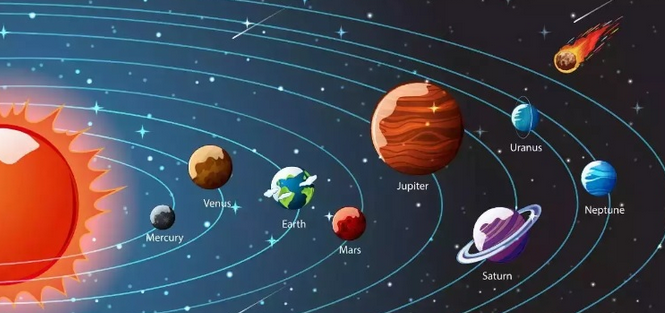
By: Shaikh Jawad Habib
Introduction
The Qur’an frequently invites humankind to reflect upon the signs of nature. Beyond moral guidance and ritual laws, it emphasizes cosmic phenomena such as the alternation of night and day, the sun, and the moon as fundamental markers of order and time. In particular, three verses—Surah al-Baqarah (2:189), Surah Yunus (10:5), and Surah al-Isra (17:12)—highlight the role of celestial phenomena in regulating time, creating calendars, and guiding worship. This paper attempts to examine these Qur’anic insights in the light of classical Islamic exegesis, the narrations of Ahl al-Bayt (a), and contemporary astronomical discoveries.
Qur’anic Perspective on the Lunar Cycle
In Surah al-Baqarah (2:189), the Qur’an addresses the question regarding the phases of the moon:
“They ask you about the new moons. Say, they are measurements of time for the people and for Hajj.”
According to Imam Muhammad al-Baqir (a), as cited in Tafsir al-Qummi, the crescent moon determines key human affairs—fasting, pilgrimage, marriage, and financial contracts. Classical commentators such as al-Tabarsi (Majmaʿ al-Bayan) and Allama Tabataba’i (al-Mizan) emphasize that the Qur’an redirects the questioner from speculative philosophy about why the moon changes shape to its practical purpose—timekeeping.
Modern science explains that the lunar cycle is about 29.53 days, forming the basis of the Islamic lunar calendar still used globally. This lunar visibility makes the Islamic calendar universally accessible—even to those without technical instruments—unlike solar calendars that require astronomical calculations.
Sunlight, Moonlight, and Scientific Confirmation
Surah Yunus (10:5) differentiates between the sun as a source of light (diyaʾ) and the moon as a reflector of light (nur). For centuries, this distinction was misunderstood, as ancient cosmologies considered both to be luminous bodies. However, contemporary astrophysics confirms the Qur’anic statement: the sun is a G-type main-sequence star producing energy through nuclear fusion, while the moon reflects solar radiation without generating its own.
NASA data on lunar phases confirms that the moon’s illumination is purely reflective. Astrophysicists such as Neil deGrasse Tyson note this as one of the foundational understandings of planetary science. Thus, the Qur’an presented an insight centuries before modern science validated it.
Day and Night as Signs of Order
In Surah al-Isra (17:12), Allah describes night and day as two distinct signs: the night as a symbol of darkness (effacing light) and the day as a manifestation of clarity. This verse also points to the use of these cycles for calculating time. From an astronomical standpoint, Earth’s rotation produces the alternation of night and day, an incredibly precise system upon which even atomic clocks ultimately depend.
Some critics question why the Qur’an describes night as “effaced.” Exegetes like Fakhr al-Razi explain that night possesses no independent illumination, whereas day derives its visibility from the sun. In modern scientific language, the absence of sunlight on the Earth’s surface is simply shadow—confirming the Qur’anic imagery.
Addressing Doubts about the Lunar Calendar
A common critique of the lunar calendar is its shorter year (approximately 354 days), falling 11 days behind the solar year. Critics see this as a “deficiency,” yet both Qur’anic exegesis and Islamic philosophy emphasize its wisdom. The shifting of Ramadan and Hajj across all seasons ensures universal equity: Muslims experience these obligations in varying climatic and economic circumstances, highlighting Islam’s adaptability and inclusivity.
Thus, rather than a flaw, the lunar system demonstrates the Qur’an’s vision of testing believers in diverse conditions while maintaining a simple and natural calendar accessible to all.
Conclusion
The Qur’an presents a comprehensive framework for timekeeping: the crescent for months, the sun and moon for calculating years, and the alternation of night and day for daily order. While modern science studies these as natural phenomena, the Qur’an identifies them as ayat Allah—divine signs that point to the Creator’s wisdom.
From the practical use of the lunar calendar to the scientific differentiation of solar and lunar light, Qur’anic insights align harmoniously with modern astronomical findings. This synthesis offers students of religion and science an opportunity to recognize the Qur’an not only as a book of spiritual guidance but also as a text that motivates reflection upon the cosmos.
